By Roland Schaefli
Jet Pilot brought together three American legends at the dawn of the jet age: John Wayne, aviator Howard Hughes and record-breaking test pilot Chuck Yeager.
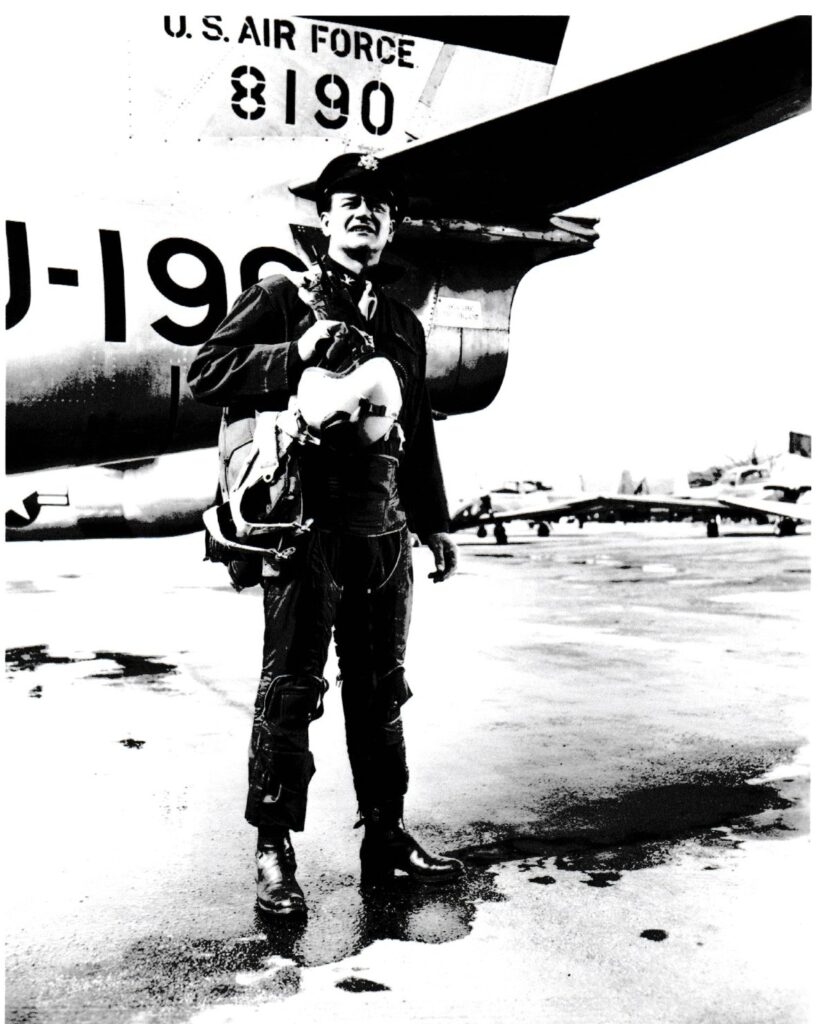
John Wayne as the American Air Force colonel during filming at Edwards Air Force Base in the Mojave Desert. (Still from Jet Pilot, author’s collection)
Hollywood Lands at Edwards
The movie project and the friendship between John Wayne and aviator Howard Hughes began one night at Chasen’s, Hollywood’s famous eatery. Hughes offered to fly Wayne to Mexico City to reunite with his future wife, Esperanza, as he always kept a plane ready. When they later married, Hughes personally flew the newlyweds to Hawaii, the first civilian flight since the end of the war.
When Hughes gained control of RKO Pictures, he offered Wayne a project combining jet technology and Cold War intrigue. His Air Force contacts opened doors at the base near Lancaster, California, where filming began Dec. 4, 1949. That same week, Muroc Army Air Field was renamed Edwards Air Force Base in honor of Capt. Glen W. Edwards, who was killed while testing a new aircraft.
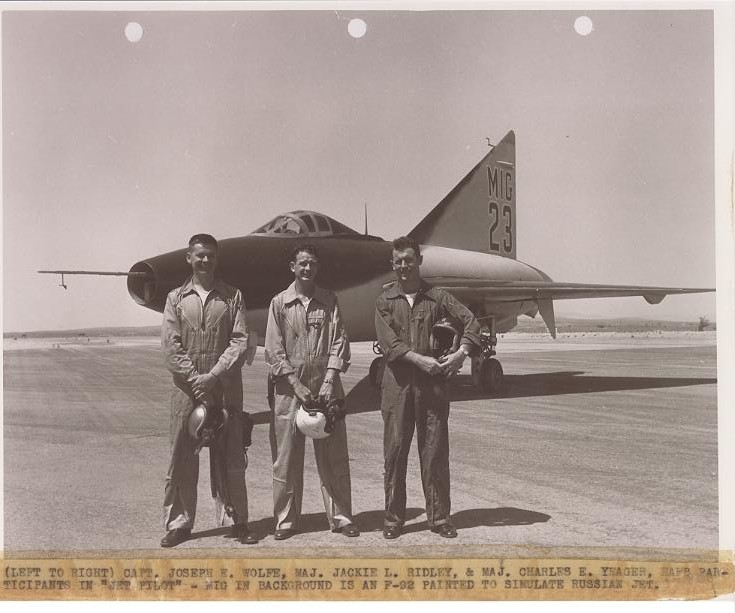
Maj. Chuck Yeager, Capt. Joseph S. Wolfe and Maj. Jackie L. Ridley (right to left) pose beside the mock “MiG-23” used in Jet Pilot at Edwards Air Force Base. (U.S. Air Force/412th Test Wing Archives)
The producer hired Air Force aces as technical advisers, among them Capt. Chuck Yeager, the first man to break the sound barrier on Oct. 14, 1947, in the Bell X-1. Yeager staged high-speed passes for the cameras, doubling for Wayne in the flying sequences. The film’s climax, in which Wayne’s pilot escapes from Russia in a sleek, rocket-like jet, serves as a cinematic tribute to Yeager’s pioneering work.
His participation gave Jet Pilot the rare distinction of featuring the man who had actually broken Mach 1. To heighten the illusion of Cold War tension, the production converted U.S. Air Force jets into on-screen adversaries, painted to resemble fictional MiG-23s.
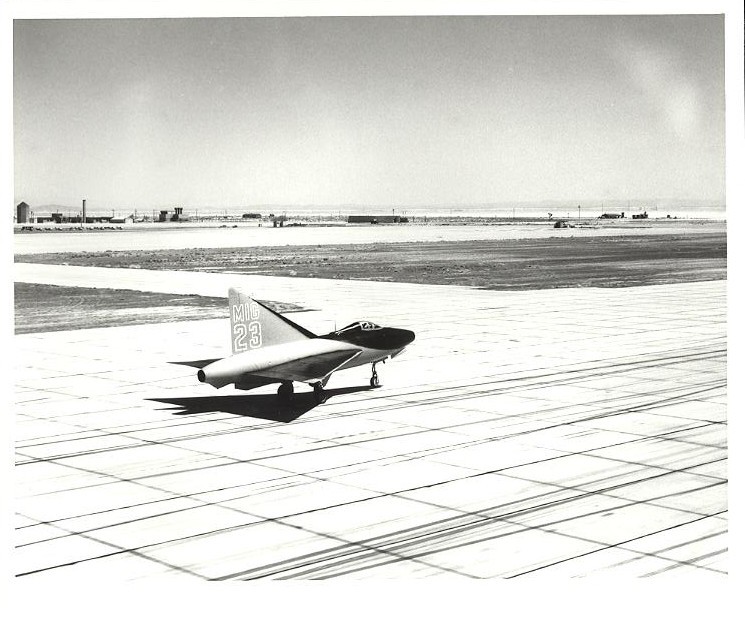
A U.S. Air Force F-92 painted as a fictional “MiG-23” for Jet Pilot taxis across the Edwards runway during filming in 1950. (U.S. Air Force/412th Test Wing Archives)
Wayne approached the title role with respect. He filmed in a mock-up cockpit while instructors coached his movements and radio calls. “I wanted Jet Pilot to be as close to the truth of Air Force life as a movie can get,” he told the Los Angeles Times.
After Wayne wrapped, Hughes continued filming for another 17 months, logging 250 hours of aerial footage. As late as March 1953, cinematographer William Clothier—the fifth cameraman to be hired—continued shooting for 15 more months. “Hughes demanded clouds that look that good or better,” Clothier recalled.
“It was just too stupid for words,” Wayne later said. When Jet Pilot finally premiered in 1957, jet technology had already moved on.
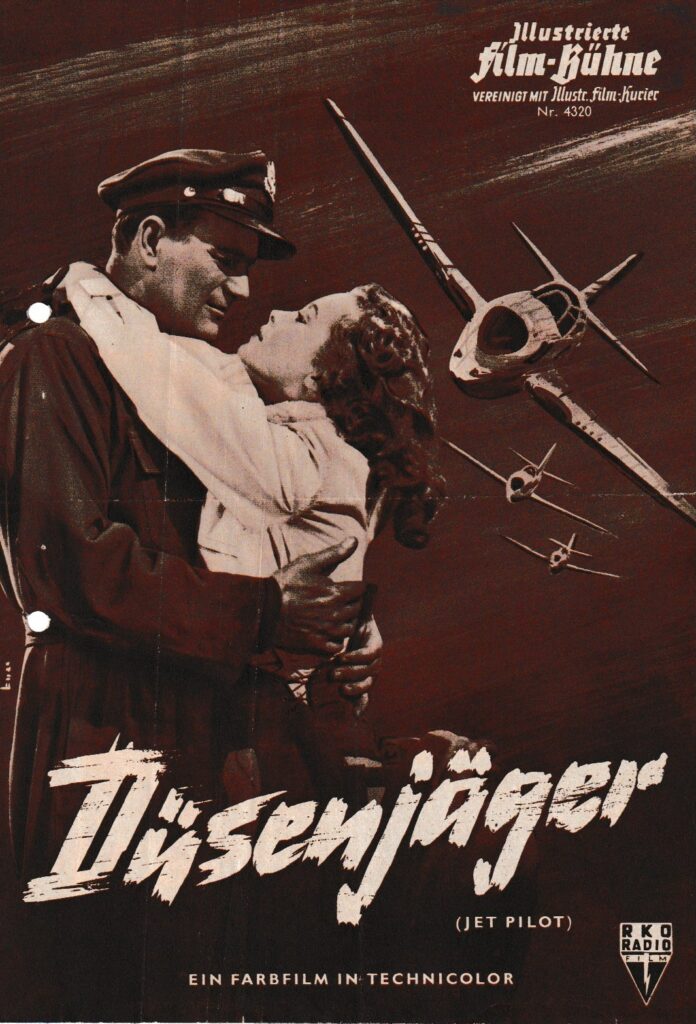
Although Jet Pilot had a limited U.S. release, it enjoyed wide European distribution. This German souvenir program was sold in theaters. (Author’s collection)
A Partnership That Still Flies
While Jet Pilot was still in production, it opened Hollywood’s eyes to the base’s cinematic potential. Soon Humphrey Bogart filmed Chain Lightning (1950), and William Holden starred in Toward the Unknown (1956), shot entirely at Edwards. The Entertainment Liaison Office, created by the Office of the Secretary of Defense, allowed realistic filmmaking under clear conditions. The partnership born with Jet Pilot continues today, as modern heroes such as Iron Man (2008) and Man of Steel (2013) share the same runway.
When RKO went bankrupt and Hughes sold the rights to 700 films, he bought two of them back, Jet Pilot among them. Hughes reportedly continued screening the film privately for years.
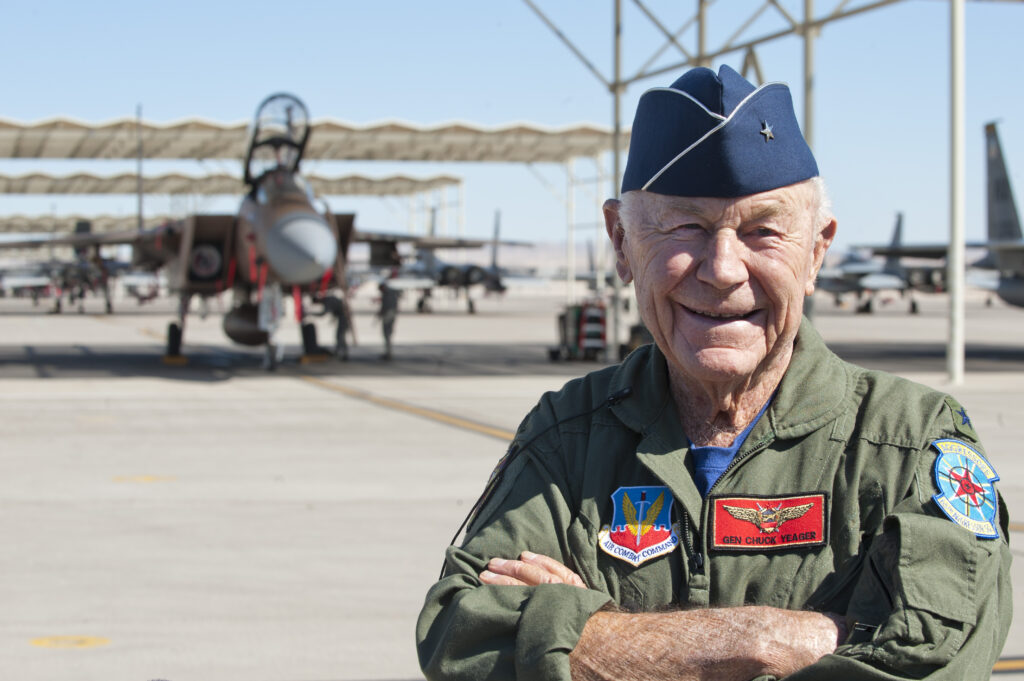
Retired U.S. Air Force Brig. Gen. Chuck Yeager prepares to climb into an F-15D Eagle on Oct. 14, 2012, marking the 65th anniversary of his historic sound barrier flight. (U.S. Air Force photo)
Though never fully recognized, Jet Pilot stands as a rare record of the moment when courage, technology and cinema converged—a film that launched Hollywood’s enduring partnership with Edwards Air Force Base.
Byline: Roland Schaefli is a journalist, a contributor to JOHN WAYNE — The Official Collector’s Edition magazine, and the author of the book «John Wayne Was Here»
Sources
Maurice Zolotow, Shooting Star (Simon and Schuster, 1974), 176, 276.
Roberts and Olson, John Wayne: American (The Free Press, 1995), 352.
Michael Munn, John Wayne: The Man Behind the Myth (New American Library, 2003), 131.


